
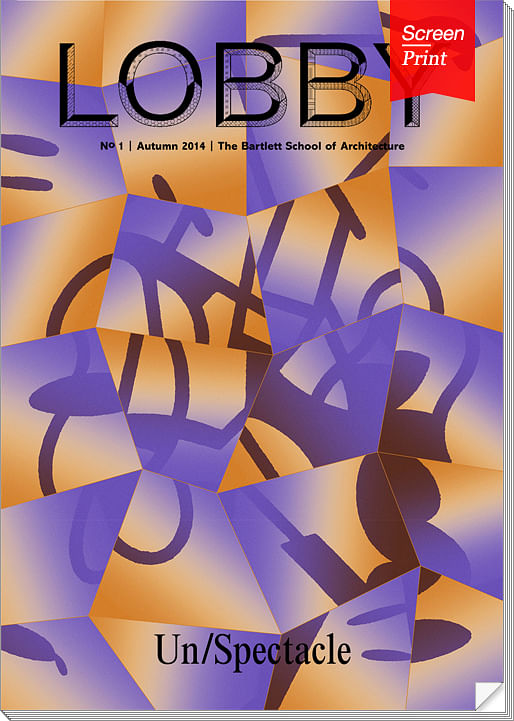
With a name like LOBBY, The Bartlett School of Architecture’s new architecture magazine puts itself in two camps. Interpreted as an architectural metaphor, the magazine is a waiting area, a limbo-space between inside and outside. Alternatively, it’s a political rallying group, pushing its agenda on the powers that be. From the looks of the first issue, Un/Spectacle, LOBBY is set on occupying both those territories.
LOBBY is, well, like a lobby, because it tries to link life inside The Bartlett School of Architecture to the outside. Known for producing work that tends towards the radical and futuristic, The Bartlett’s place in architectural education is in no way analogous to a standard print magazine in the world of architectural publications, and yet LOBBY is that -- trying to take print’s limitations as creative challenges. Put into this traditionalist form, it becomes a bit more accessible to the outside, “lobbying” for public engagement.

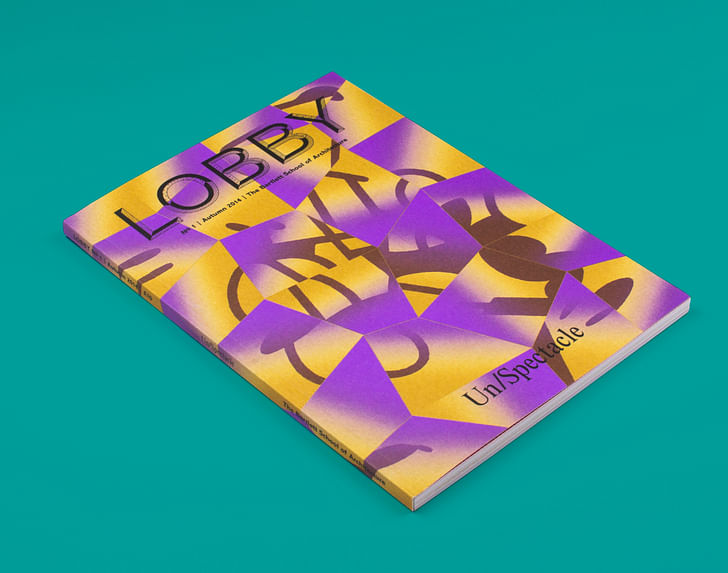
The debut issue, Un/Spectacle, posits that architecture discourse has focused so much on the concepts “mundane” and “spectacle” such that their meanings are inverted — the spectacular is boring, the mundane becomes special. What’s to be done from this point on?
Our featured piece for Screen/Print, by Bartlett School of Architecture student Patch Dobson-Pérez, ventures into the deserts of the Southwestern U.S. to walk that line between mundane sand dunes and spectacular Vegas glitz (or perhaps it’s the other way around).
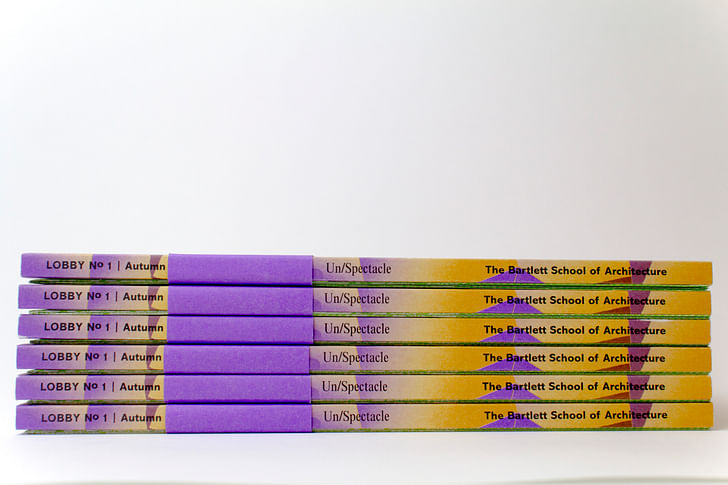

Leave Nothing But Footprints
by Patch Dobson-Pérez
In November 2013, I went on an ‘off-grid’ expedition spanning three states of America with my unit from The Bartlett. Beginning in Los Angeles, California, we passed by minivan through the Mojave Desert and Death Valley, camping in ghost towns, sand dunes and military zones in bespoke structures hand-crafted by ourselves, which during the day functioned as transient laboratories. There were a range of scientific interests specific to the area being explored, from the transit of the sand of the dunes, to the seismic activity of the San Andreas Fault. The primary aim of our devices was to settle them in a variety of natural landscapes without disrupting the natural order of things, aiming to discover something about a desert which takes nothing from us in return.

we were plunged into a glittering consumerist metropolis at magic hour accompanied by Frank Sinatra.Midway through this journey we spent one night in Las Vegas, and by so abruptly entering such a polar opposite of where we’d been, the prior ‘off-grid’ nature of the journey was put into perspective; it was the most contrasting spatial transition I’ve ever been a part of. Surely there aren't many other such vividly disparate places coexisting in the world. From surviving in the classic American desert with sporadic inhabitants, no connectivity and no showers, we were plunged into a glittering consumerist metropolis at magic hour accompanied by Frank Sinatra. It was an awe-inspiring experience and difficult to assimilate fully at the time. For the previous five days and nights we’d had an unusual focus on ‘nature’ due to the scientific and investigative intent of everyone’s projects; a full appreciation of the details of the landscape, in a pure and peaceful context. Suddenly, the details became much more difficult to take in with the overwhelming backdrop of Vegas. The intensity had gone from that of a head torch to the thousands of blinding neon lightbulbs of the Stratosphere tower. We were now in a microcosm of financial lust surrounded by the untouched wilderness we’d been living with.
Las Vegas was originally Native American land and through gaming profits, the tribes now have the economic means to exercise their "inherent sovereign powers”. At first this sounds wonderful, but over time, their culture has been effectively destroyed. For me, this is analogous to the relationship between the casino and the gambler; they are lulled into a false sense of security and then have everything taken from right under their noses.

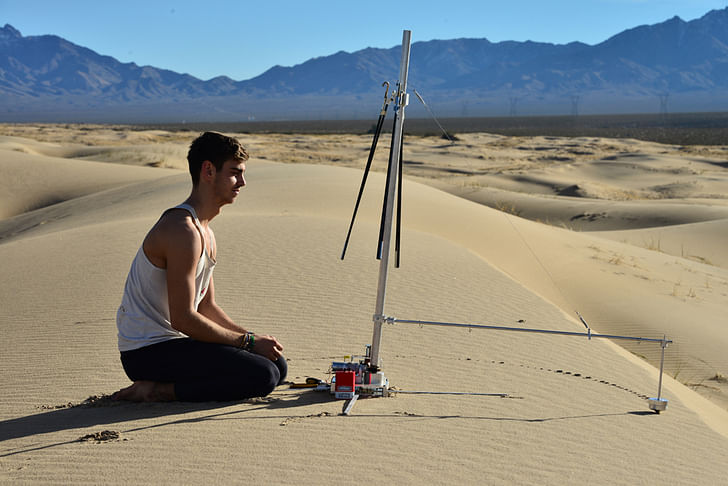
The imposition of Vegas in the Mojave Desert, on what was once the land of a people who had a symbiotic relationship with the earth, is what struck me most. We had been living lightly on the earth, taking nothing but readings and photographs, and leaving nothing but footprints, but within a few hours we were — once again — living heavily on the land, eating there is a wild madness in Vegas; it’s a city that exists comfortably in the company of drunken vagabonds and prostitutes.entire plates of Alaskan Snow Crab legs at the $40 Bellagio buffet. This perfectly illustrates the nature of Las Vegas; a resource-hungry conglomeration dropped in the middle of a resource-scarce context.
To me Vegas was very much an illustration of corporate America, a world only kept alive by the many interpretations of the good ol’ American Dream. The mantra that “life should be better and richer and fuller for everyone, with opportunity for each according to ability or achievement”, is what prompts the hordes of token-hungry people to arrive for their one hard-earned holiday of the year in a gambling frenzy and sit like robots for hours on end playing slot machines which ultimately never pay out. They’re tricked into thinking they're winning, when — as in the entire consumerist culture — the casino always wins. From first-hand witness, I find it difficult to believe that their life is any richer than that of the Native Americans who previously lived in harmony with their context — as the American forefathers would have them believe.
Unlike our careful mindset out in the desert, there is a wild madness in Vegas; it’s a city that exists comfortably in the company of drunken vagabonds and prostitutes. This is a stark contrast with the delicate balance of the surrounding desert which can only remain intact with the help of deliberate frugality from its inhabitants, Vegas feeds off irrationality and it’s a gamble in itself, to plant such a devouring scheme in such a desolate landscape in the hope that it will survive.mindless spending and actually prospers from the nouveau riche cohorts of young American bankers and lawyers who go and frivolously spend, in a desperate affirmation to themselves that they are living the American Dream. I would argue that, in Vegas, this dream has evolved into a maligned parody of itself. Whereas before it was about anybody being able to prosper through hard work and determination, Vegas is a corruption of it — a shortcut where you win through luck.
One could say it’s a gamble in itself, to plant such a devouring scheme in such a desolate landscape in the hope that it will survive. For now, the great machine of Vegas keeps rumbling on, but I wonder if, like the indigenous settlements that came before it, there will come a day when it returns to the desert from which it sprang.
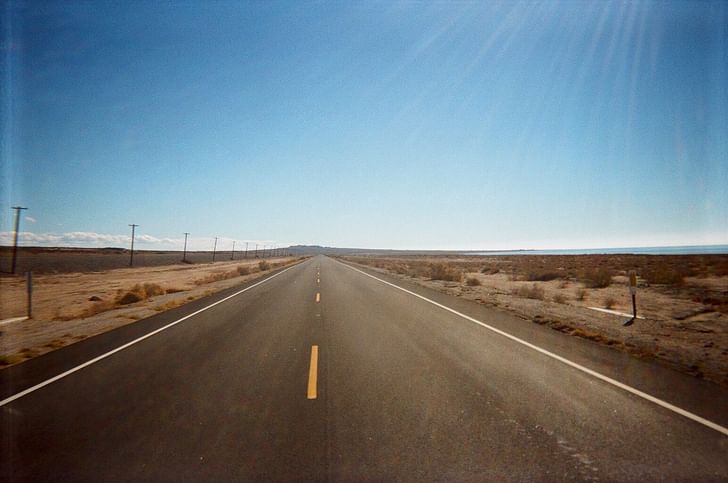


Un/spectacle also features contributions from:
Copies of Un/Spectacle can be purchased here. LOBBY is printed by Aldgate Press, designed by Studio 4, and led by Bartlett students Regner Ramos, Sophie Read, Nahed Jawad, Stylianos Giamarelos, Laura Narvaez, and Mrinal Rammohan.
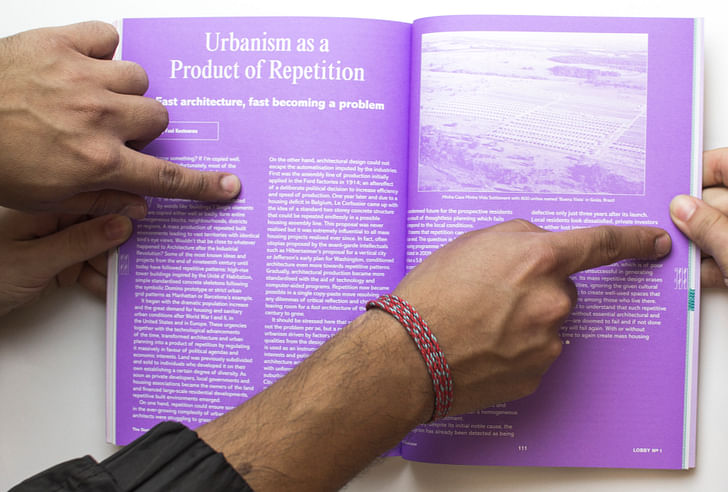
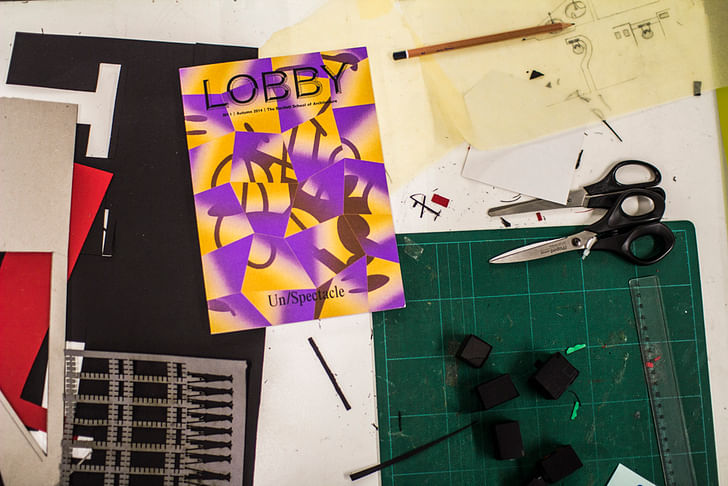
Screen/Print is an experiment in translation across media, featuring a close-up digital look at printed architectural writing. Divorcing content from the physical page, the series lends a new perspective to nuanced architectural thought.
For this issue, we featured LOBBY from The Bartlett.
Do you run an architectural publication? If you’d like to submit a piece of writing to Screen/Print, please send us a message.
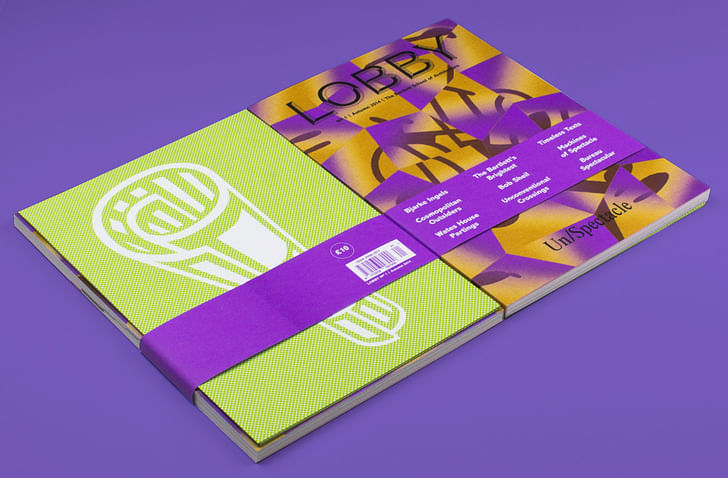
Former Managing Editor and Podcast Co-Producer for Archinect. I write, go to the movies, walk around and listen to the radio. My interests revolve around cognitive urban theory, psycholinguistics and food.Currently freelancing. Be in touch through longhyphen@gmail.com
No Comments
Block this user
Are you sure you want to block this user and hide all related comments throughout the site?
Archinect
This is your first comment on Archinect. Your comment will be visible once approved.